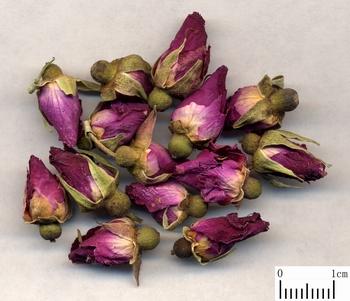玫瑰花
| Name (CN) | 玫瑰花 (Méi guī huā) |
|---|---|
| Synonyms (CN) | |
| Name (EN) | Rose Flower, Rugose Rose Flower |
| Scientific name(s) | Flos Rosae Rugosae, Rosa Rugosa Thunb, Rosa Rugosa |
| Used section | Flower |
| Taste | Sweet、Bitter |
| Channel Tropism | Induce in the liver and spleen meridians. |
| Cold/Hot properties | Warm |
| Group | Plant [Vegetables And Products] |

| Origin | The dried flower buds of Rosa rugosa Thunb. |
|---|---|
| Function and treatment | Promoting the flow of Qi and relieving depression, harmonizing blood and relieving pain. Used for liver and stomach pain, vomiting, menstrual disorders, painful stumbling and injuries. |
| Origin and best harvesting period | Rose is native to northern China. It is mostly cultivated in courtyards or gardens. It is cultivated all over the country. Mainly produced in Jiangsu, Zhejiang, Fujian, Shandong, Sichuan, Hebei and other places. They are most abundant in Shandong, Jiangsu, Zhejiang and Guangdong. Roses bloom in May and June, which is the peak rose-picking season, and the best time to pick roses is usually between 5 and 9 in the morning. |